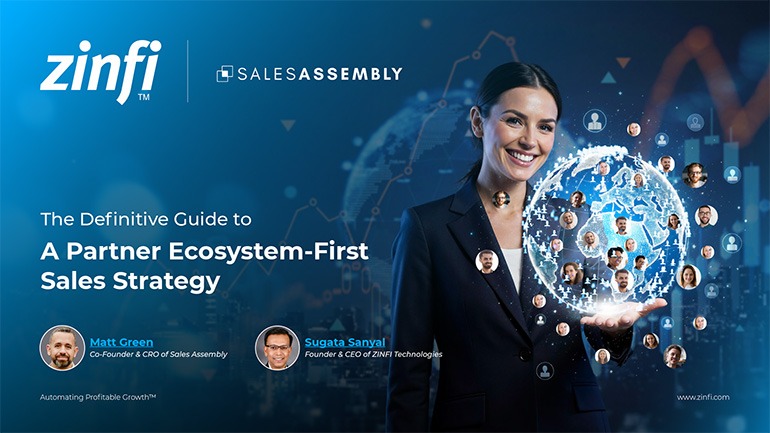Best Practices Articles

Can Channel Marketing Learn from Rock and Roll?
Rock and roll musicians, and the industry that has grown up around it, have always been perceived as trailblazers. Innovative ideas and expression have always been a big part of the development of popular music, and getting broader acceptance has been a challenge that has motivated musical acts and performers to come up with new ways of getting the word out. One important marketing method that grew out of the music industry is the use of loyal followers to help spread the word about a band or act. That’s where the concept of the “street team” came from, after all—and if you really think about it, this was one of the first true forms of channel marketing.
What is a street team? In the music industry, it’s a group of fans and followers who help spread awareness of a performer or act through local and regional efforts. Corporations and major brands are now starting to pick up on the concept and develop their own “street teams” to help promote and market their own products. Let’s take a look at what makes up a street team from an operational standpoint, what makes teams successful and how channel marketers can learn from them.
Any given act might have local street teams set up in various cities across the country or even the world. Street team members are, first and foremost, advocates of the act. Their role is to go out and create brand awareness and adoption. In fact, very organized regional teams have often established guidelines and strategies, and they train or “onboard” other members in these approaches. Typically, they distribute marketing materials, which are either self-generated or provided by the performer, and those materials are sometimes co-branded. They also are likely to handle sales in a localized way—say, by running a merchandise booth at a local performance or festival. Furthermore, team members are often incentivized or compensated for their efforts and allegiance with offers of free tickets, merchandise, rewards and so on. They can even petition the act to create their own “deal,” perhaps negotiating for a local appearance at a particular venue.
Is this starting to sound familiar? Not only are street teams often quite successful as a grass-roots, localized and dynamic resource, but they also operate in ways that reflect many of the core principles that form the basis of partner or channel marketing.
So, what specific street team principles can we apply to channel marketing?
- Focus on direct one-to-one customer base engagement. Regional teams or networks are local to the customer base of that geography, and they are engaging with the target audience in a more in-person and close-touch way than global vendors who do business out of central hubs. They collect feedback and audience reaction to the act or brand and use that feedback to adjust their efforts, tactics and approaches—often passing this information back up to the act themselves, or networking with other regional teams to share insights for success. Unfortunately, these same activities are not often seen in traditional corporate channel marketing or partner marketing. Partner portals and channel platforms often lack a mechanism to pass insights back up to vendor—let alone share marketing insights and success stories with other partners in the network. “Boots on the ground” engagement in various global areas is very useful in gaining valuable metrics and insight, and this tactical data can help focus and empower the collective local success of a brand. Intranetwork sharing of best practices can only help the OEM to develop a more powerful channel by providing successful methodologies as demonstrated by high-performing partners.
- Pull regional success up to global efforts. To elaborate on the discussion above: When local or regional paths to success have been identified, sharing with other partners to strengthen their efforts is great. But the vendor or OEM itself should pull this methodology up to analyze and adapt to the global channel marketing level. Street teams not only share amongst themselves what works best to get the public interested in their act, but they also pass that info on to the act—and they often use it to develop marketing efforts in conjunction with their record label or PR agency. If something works well on a regional level, then that approach should be analyzed to see if it might be equally effective in a broader context. Not every locally successful strategy will ultimately prove effective globally, because some methods rely heavily on local standards, culture or beliefs. However, more often than not the methods used in smaller markets can carry up the chain and be used to develop national or worldwide promotional campaigns or targeted sales. Learn small and deploy large!
- Incentivize to bring other partners onboard. A focus on incentivizing often seems to rely on individual partners or the partner company to perform or bring in centralized results. It is much less common for partners to be a moving part of the network, capable of helping the entire channel marketing force grow. Street teams, on the other hand, are not only provided with incentives to be successful in the promotion of the act, but they are also encouraged to bring on new regional advocates or teams. The same should be true in channel marketing. Why not develop programs for partners to be rewarded if they bring on other high-performing partners? But what about competition, you ask? Why would a partner want to submit candidacy for another new partner, only to have that new advocate outperform their sales and overshadow them? Well, consider a scenario in which a vendor or OEM has a multitude of products, and any given partner is only reselling a portion of them. Why not submit the candidacy of a new advocate or partner that would be good to take on products or services that are complimentary and don’t overlap with the products of the first partner? That way the OEM gets wider coverage, with more offerings in any given region, and has their network doing the partner search work for them—and earning rewards or incentives in the process.
- Crowdsource for content creation. Street teams are not closed-loop organizations. They take in creative and enablement assistance all the time, and often crowdsource to get this promotional help, drawing upon other fans at shows, other street teams, friends, vendors they know, and so on. This affords them a wide range of resources to use in marketing their brand. Now, some corporations have taken to crowdsourcing for contests and viral campaigns, but that is rarely looked upon as a stable tactical resource for the development of internal materials. However, there might be an opportunity to put great minds to work and develop a way to use “crowdsourcing” within the channel itself to develop marketing materials, tactics, campaign strategies and materials. Co-branding OEM-created materials is about the extent of what is available today as far as collateral development, but why not tap into all of the tactics discussed above to let the partner network not only provide input and feedback, but also contribute creative development based on what they see working in their regions? This would allow for a wider range of creative efforts within brand guidelines, and would help give local and regional flavor to the channel marketing, all the while adhering to an overarching, cohesive corporate theme.
A crossover is happening, and worldwide organizations (e.g., Snapple, Coca Cola, Virgin) are starting to recognize the benefits of using street teams. The music industry’s street marketers of yesteryear—many of which are still going strong today—have developed a solid framework for achieving brand promotion and awareness. They are the original, “old school” partner network and channel marketing model. We can learn from their successful tactical history and apply it to modern channel marketing practices. Whether you are a music fan putting up flyers and hawking tickets at the local record shop or a company that resells OEM technology products as a channel partner, in the final analysis we’re all just people selling someone else’s brand. Come together, right now… and start a revolution.
For more information on marketing automation or demand generation services, please visit us at ZINFI.com.
Best Practices Guidebook
 Definitive Guide to a Partner Ecosystem-First Sales Strategy
Definitive Guide to a Partner Ecosystem-First Sales StrategyDownload for FREE
 The Partner-Led Digital and AI Transformation Best Practices
The Partner-Led Digital and AI Transformation Best PracticesDownload for FREE
 Startup Talent Recruitment: Hiring Missionaries, Not Mercenaries
Startup Talent Recruitment: Hiring Missionaries, Not MercenariesDownload for FREE
 The Future of Partner Relationship Management with AI in Partnerships
The Future of Partner Relationship Management with AI in PartnershipsDownload for FREE
 Cybersecurity for the 99%: Strategies from the Frontline
Cybersecurity for the 99%: Strategies from the FrontlineDownload for FREE
 Mastering Partner Relationships: A Strategic Approach to Business Growth
Mastering Partner Relationships: A Strategic Approach to Business GrowthDownload for FREE
 The Smart Manufacturing Playbook: Industry 4.0 Transformation
The Smart Manufacturing Playbook: Industry 4.0 TransformationDownload for FREE
 Mastering Partner Relationship Management: Keys to SaaS Channel Success
Mastering Partner Relationship Management: Keys to SaaS Channel SuccessDownload for FREE
 Navigating the AI Revolution: Guide for Partners in the Microsoft Ecosystem
Navigating the AI Revolution: Guide for Partners in the Microsoft EcosystemDownload for FREE
 Mastering the Modern Buyers Journey: Sales Leader’s Guide to AI & Engagement
Mastering the Modern Buyers Journey: Sales Leader’s Guide to AI & EngagementDownload for FREE
 Hybrid Cloud and Edge AI Computing Impacting the Future of PRM
Hybrid Cloud and Edge AI Computing Impacting the Future of PRMDownload for FREE












